Algorithmic comparisons of decaying, isothermal, supersonic turbulence
S. Kitsionas, R. Klessen, C. Federrath, W. Schmidt, D.J. Price, L.J. Dursi, M. Gritschneder, R. Piontek, Jongsoo Kim, A.-K. Jappsen, P. Ciecielag and M.-M. Mac Low
[ pdf (1.2Mb) ] Accepted to A&A, 24th Sep 2009Abstract
Context. Simulations of astrophysical turbulence have reached a level of sophistication that quantitative results are now starting
to emerge. Contradicting results have been reported, however, in the literature with respect to the performance of the numerical
techniques employed for its study and their relevance to the physical systems modelled.
Aims. We aim at characterising the performance of a number of hydrodynamics codes on the modelling of turbulence decay. This is
the first such large-scale comparison ever conducted.
Methods. We have driven compressible, supersonic, isothermal turbulence with GADGET and then let it decay in the absence of
gravity, using a number of grid (ENZO, FLASH, TVD, ZEUS) and SPH codes (GADGET, VINE, PHANTOM).
Results. We have analysed the results of our numerical experiments using a variety of statistical measures ranging from energy
spectrum functions (power spectra), to velocity structure functions, to probability distribution functions.
Conclusions. In the low numerical resolution employed here the performance of the various codes is comparable. In more detail, our
analysis indicates that the numerical techniques used can be sorted from least to most dissipative as follows: ENZO-FLASH; TVD;
ZEUS-SPH codes. Use of the Morris & Monaghan viscosity implementation for SPH results in less dissipation. We have shown that
the density-weighted power spectrum is a more robust statistical measure for the study of compressible turbulence. Here we have
adopted the (rho/rho_0 )^1/2 velocity weights which provide physical reference to kinetic energy.
Movie
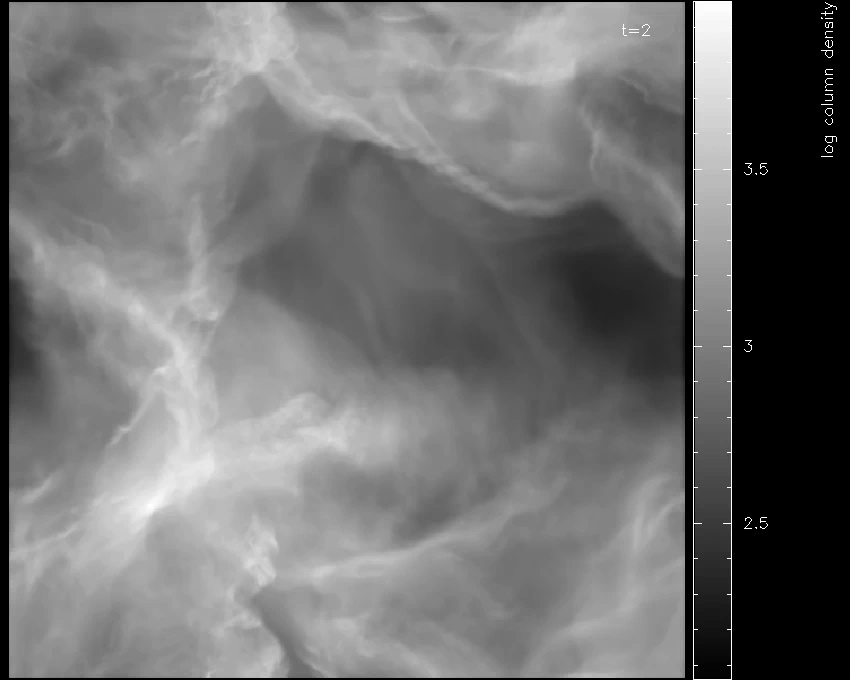
|
Movie of the PHANTOM calculation (6Mb Quicktime) |
Images
| Snapshots from the PHANTOM calculation: | |
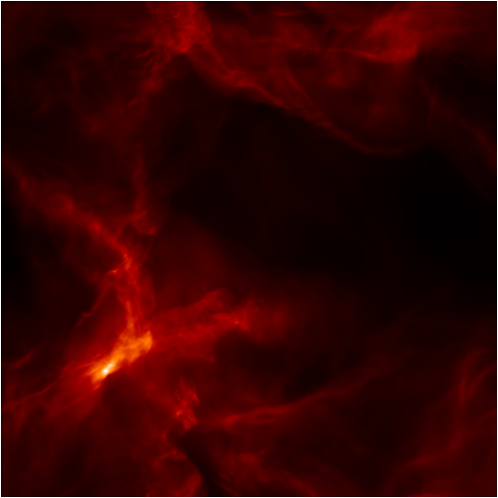
|
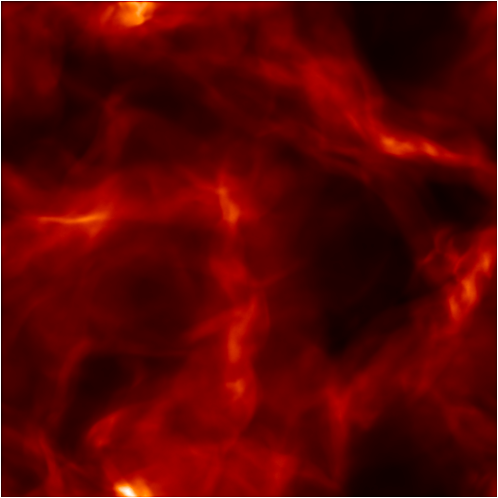
|
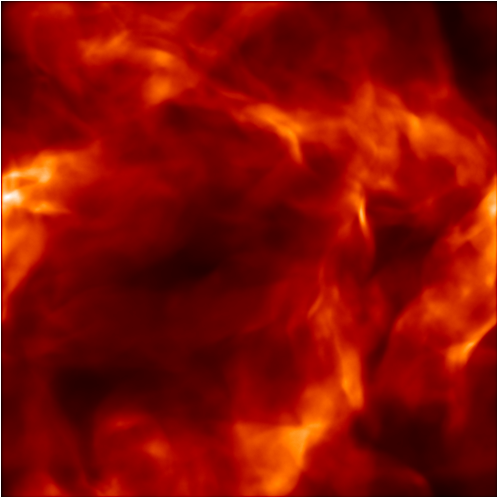
|
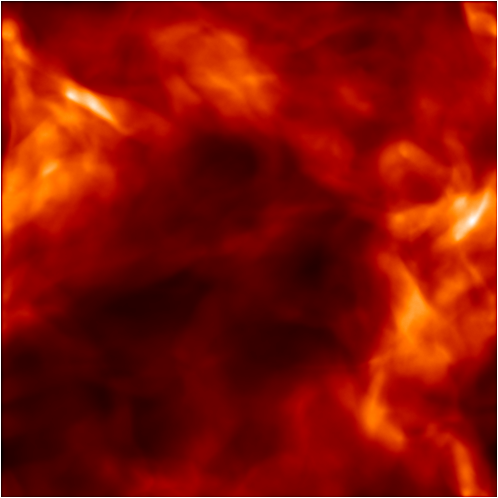
|
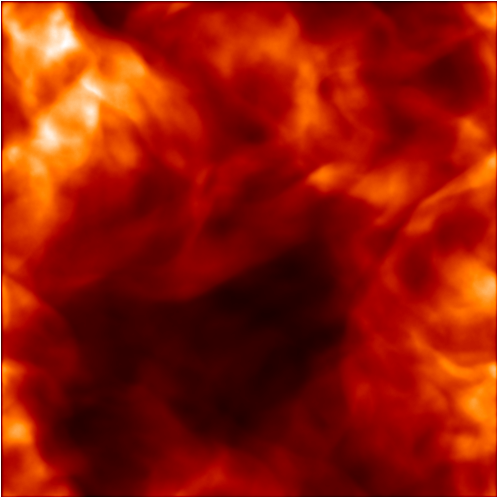
|
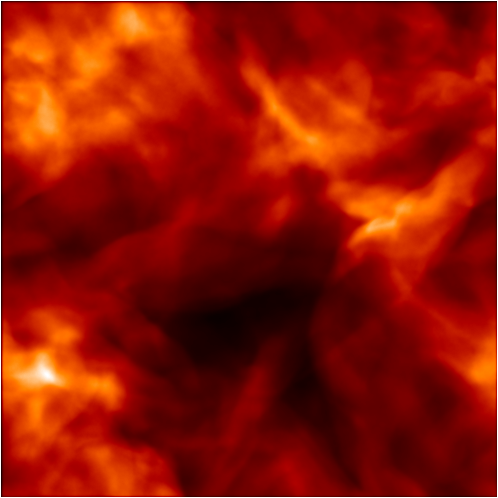
|
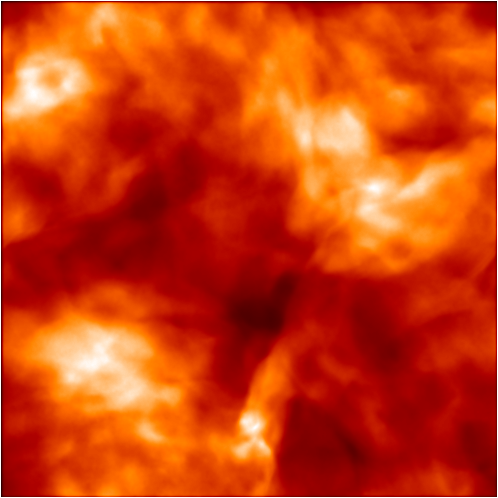
|
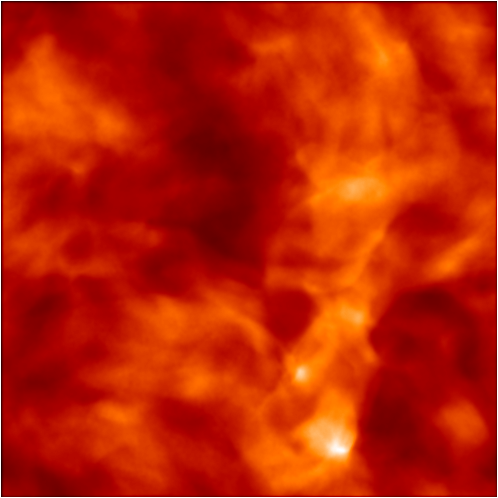
|
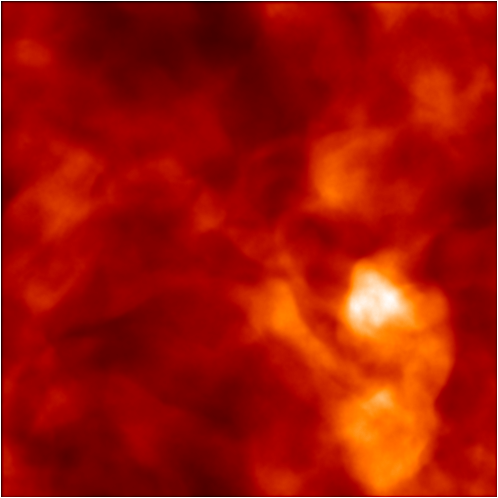
|
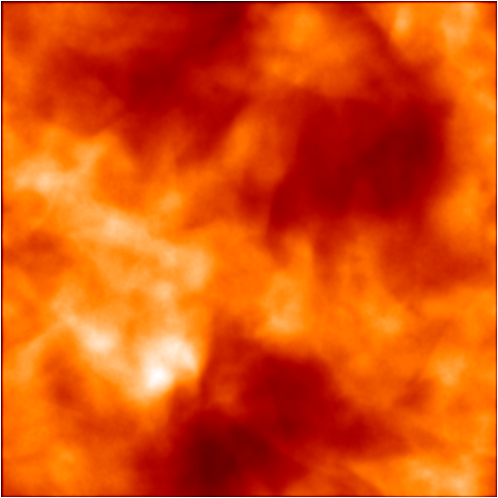
|